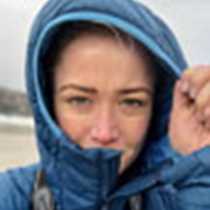Sailing across the Drake Passage is known as one of the world’s most infamous voyages. Spanning just 600 miles from the tip of South America to the coast of the South Shetland Islands, this stretch of ocean is subject to powerful storms as a result of the weather systems circling the Southern Ocean being concentrated as they travel through this narrow passage. In spite of this notorious reputation we found ourselves awakening to clear skies and calm seas. The Drake Passage wasn’t living up to its reputation!
So having sat down to a lovely breakfast without having to worry about our coffee spilling or our apples rolling off the table, many of us took advantage of the calm conditions and piled out onto deck to enjoy the crisp fresh air and the bird life. Petrels and albatross were the two most common species and at 09:30 it seemed like the perfect timing for Rich to deliver his presentation, Seabirds of the Southern Ocean.
In addition to Rich’s presentation, our day at sea also offered us the time to hear more about the geology of Antarctica from Marylou. During this presentation Marylou talked about the Antarctic Convergence—a very important and noticeable feature of the Drake Passage, although not a visible one. When crossing the Antarctic Convergence there is a sudden and perceptible drop in temperature. Marylou explained why we experience this temperature drop: The cold upwelling waters from the deep ocean and the Antarctic Circumpolar Current combine to create a barrier between the hot air and water to the north and the cold air and water to the south. This oceanographic barrier is essentially why Antarctica remains as a unique frozen environment.
Whether enjoying the staff presentations with a cappuccino in hand or enjoying the observation lounge and its extensive library; appreciating a relaxing massage with Katrina, our wellness specialist, or burning some energy in the gym, there is no shortage of experiences during a day at sea aboard National Geographic Orion. What is more, there is no shortage of delicious food. Come lunchtime it was quite clear that we were going to be extremely well fed for the duration of this exciting voyage. It is difficult to know where to start when enjoying a lunchtime buffet on board National Geographic Orion!
Following lunch we had the opportunity to become more acquainted with our cameras and the basics of expedition photography with a useful and insightful talk from Ralph. In the later afternoon Rich, Adam, and Justin combined forces to tell us more about the wildlife we are hoping to encounter when we reach the peninsula. They talked about seabirds, seals, and whales and discussed their general natural history as well as how to go about identifying different species.
Having listened to such interesting presentations about both Antarctica and expedition photography, our appetites had most certainly been whetted for our arrival at the Antarctic Peninsula. Now all there was left to do this evening was to enjoy cocktail hour, a magnificent dinner, and perhaps a spot of late night wildlife watching out on deck. Our first full day on board the National Geographic Orion was certainly a success.









